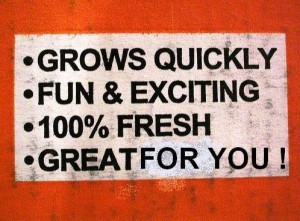Last night I attended the Sydney Festival event Hope 2012 with the theme “Citizens seizing the day”.
 Social Media was hailed as one of the agents of change. Certainly it has made it possible even in oppressed societies for citizens to reach more people and help gain momentum and support for their plight and desired change (think recent people lead change in Egypt as well as community support generated for those affected by QLD Floods, NZ & Japan Earthquakes etc).
Social Media was hailed as one of the agents of change. Certainly it has made it possible even in oppressed societies for citizens to reach more people and help gain momentum and support for their plight and desired change (think recent people lead change in Egypt as well as community support generated for those affected by QLD Floods, NZ & Japan Earthquakes etc).
However social media really only represents an easy, low-cost, high reach and engagement channel. It is not the channel that brings change but the opportunity it presents and the people who engage within it and the messages they share.
Listening to the personal stories of the great speakers last night and those across Australia, there were some common and consistent messages that suggest a blue print for bringing about change. They point to the cause of which the channel is only the conduit:
1) Hope Powers Change – you must first genuinely hope to bring about change . Hope then provides the fuel and momentum for you to continue in the face of adversity, inequity, barriers, and power imbalance. Hope also binds people together behind a common cause.
2) It starts with the first step – no matter how small, everything you contribute to bringing change no matter how small can make a difference. The benefits of taking 1 minute of your time, showing or demonstrating your encouragement and support, donating something small (time, message, money, resources). Just taking an action can generate, add-to or complete some great act of change in someone’s life. It has the added benefit of impacting you positively too.
3) Look for, understand & stand for basic human rights – equality, freedom, opportunity for everyone – how can you ensure this is enjoyed by everyone. Identify how many of your rights you take for granted that are not available to others. Identify the basic human rights that are being challenged all around the world including in our own back yard (and our legislation).
4) Connect directly with people affected – it is too easy to be disconnected from the person and people who needs help. Listen to their story. Listen to their hope. It is impossible to ignore and will help you know the right action to take.
5) Have Courage – it requires courage to stand up, have a voice, be counted and more importantly to act. It starts with the courage to ask yourself “why is this happening and what can I do to change it?”
It felt easy to applaud those making changes last night however significantly more difficult and uncomfortable to ask ourselves how much are we doing at the individual level to bring about change.
It matters not how much we have done to support required changes in the past, only how much we can do moving forward.
I reflect on the great George Bernard Shaw quote:
“The reasonable man adapts himself to the world; the unreasonable one persists in trying to adapt the world to himself. Therefore all progress depends on the unreasonable man.”
It points to the need to stand resolute and that we must first look to ourselves as the instruments of change.
May 2012 be your year. Allow Hope to power the change you desire.








